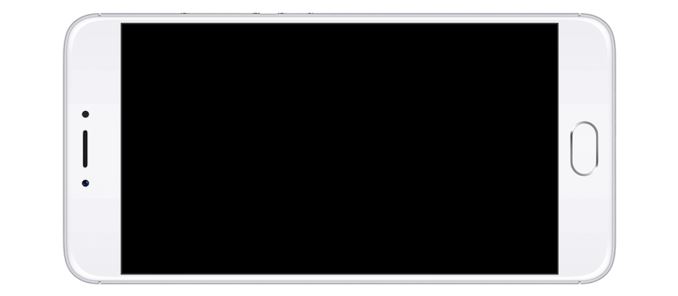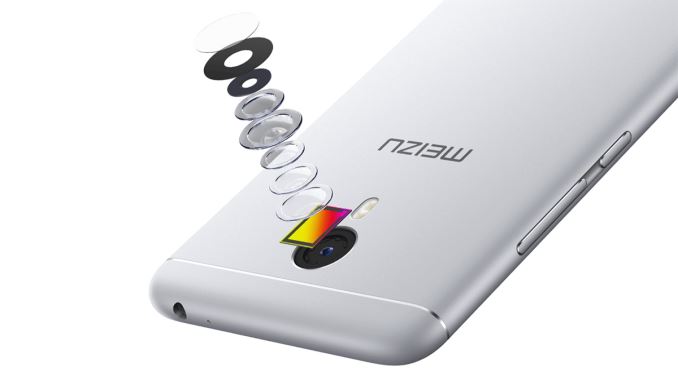Meizu Launches the m3 note
by Matt Humrick on April 8, 2016 12:01 AM EST
With every year, we tend to see quite a few launches happen in the first two quarters as the cycles in supply chains align for mass production to start around this time. We’ve already seen a number of new products from Huawei, LG, Samsung, and Xiaomi. Meizu is the latest company to join this list with its announcement of the m3 note.
With a 6061 aluminum unibody design, the m3 note draws heavily from the PRO 5. The rear camera is accentuated by a large, black surround with the pill-shaped dual-color LED flash sitting just below. Unlike the PRO 5, however, the camera sits flush with the back. Meizu’s unique T-slot design also carries over from the PRO 5. Instead of the usual plastic antenna strips, Meizu machines slots into the aluminum back, whose polished finish provides a nice contrast to the sandblasted aluminum.
The volume rocker switch sits above the power button inside a groove machined into the right edge, while the SIM and SD card combo slot is on the left edge. A 3.5mm headphone jack is found up top. The downward firing speaker sits next to a centered microUSB port on the bottom.
The m3 note’s 5.5-inch FHD IPS display—which reaches a peak brightness of 450 nits, according to Meizu—sits behind edge-to-edge glass. There’s also an mTouch 2.1 fingerprint sensor below the screen that’s surrounded by a stainless steel accent ring. Overall, the rounded corners, beveled edges, and 2.5D curved cover glass give the m3 note a similar in-hand feel to the iPhone 6s Plus.
| Meizu m3 note Specifications | ||
| SoC | MediaTek Helio P10 (MT6755) 4 x 1.8GHz Cortex A53 (Performance) 4 x 1.0GHz Cortex A53 (Efficiency) Mali T860MP2 |
|
| RAM | 2/3GB LPDDR3-833 | |
| NAND | 16/32GB (eMMC 5.1) + microSD | |
| Display | 5.5" 1920x1080 IPS LCD | |
| Modem | 2G / 3G / 4G LTE Category 6 (Integrated MediaTek WorldMode) Dual SIM DSDS |
|
| Mainland China variant GSM: B2/B3/B8/B5 TD-SCDMA: B34/B39 WCDMA: B1/B2/B5/B8 CDMA: BC0 TDD-LTE: B38/B39/B40/B41 FDD-LTE: B1/B3/B7 |
International Market variant GSM: B2/B3/B8/B5 WCDMA: B1/B5/B8 TDD-LTE: B40 FDD-LTE: B1/B3/B7 |
|
| Dimensions | 153.8mm x 75.6mm x 8.2mm; 163g | |
| Camera | Rear Facing 13MP f/2.2 PDAF Dual LED Flash |
|
| Front Facing 5MP f/2.0 |
||
| Battery | 4100 mAh (15.79Wh) | |
| Launch OS | Android 5.1 with Flyme 5.1 UI | |
| Connectivity | 802.11 a/b/g/n/ac, Bluetooth 4.0 GPS/GNSS, Micro USB 2.0, DLNA |
|
| Launch Price (CN) | 799/999 RMB (125/155 USD) 2GB/3GB | |
Inside the aluminum chassis is an octa-core MediaTek Helio P10 SoC. This midrange SoC uses four ARM Cortex-A53 CPUs with a max frequency of 1.8GHz and another four with a max frequency of 1.0GHz in a big.LITTLE arrangement. These frequencies are a little below the P10’s rated frequencies of 2.0GHz and 1.1GHz, respectively. So either Meizu is underclocking the P10 to save power, or it’s using a lower-binned version of the P10.
The P10 SoC also includes an ARM Mali-T860MP2 GPU. This is ARM’s current midrange GPU, which features two ALUs per core instead of three ALUs per core like the high-end Mali-T880.
The m3 note comes in two different configurations: 2GB RAM / 16GB internal storage and 3GB RAM / 32GB internal storage. Both versions support microSD cards for storage expansion and feature a rather large 4100 mAh battery, which should provide the m3 note and its lower-clocked P10 SoC with excellent battery life.
The 13MP rear camera sits behind a 5-piece lens array with an f/2.2 aperture. It’s unclear who makes the sensor, but it does use PDAF to improve focus speed. There’s no OIS support, which is a feature that has yet to trickle down to this price point. The m3 note records video at up to 1080p30, a limit imposed by the P10 SoC.
The m3 note comes in three different colors: gold/white, silver/white, and gray/black. It will be available in China for 799 and 999 RMB for the 2GB and 3GB models respectively. The m3 note will also be available India, Russia, France, Spain, Brazil, Italy, Russia and several other countries throughout Europe, Southeast Asia, Middle East and Latin America, with exact pricing to be determined.













42 Comments
View All Comments
jjj - Friday, April 8, 2016 - link
One interesting bit about this phone is that operating temps are rated at -15C to 55C. Vast majority of phones are rated at 0 to 35C.damianrobertjones - Friday, April 8, 2016 - link
"MediaTek Helio P10 (MT6755)4 x 1.8GHz Cortex A53 (Performance)
4 x 1.0GHz Cortex A53 (Efficiency)"
Madness. Why does a phone need that many cores? Yes, sure, battery vs performance but surely 2 cores or actual quad that can clock down would be better?! Then again... Android. Say no more.
Zink - Friday, April 8, 2016 - link
Having 8 cores is useful for improving performance on Android and the die area taken up by the CPU cores is very small for these low performance cores.http://www.anandtech.com/show/9518/the-mobile-cpu-...
MrSpadge - Friday, April 8, 2016 - link
Of course all of those cores can lower their clock & voltage. The point of using different cores in BIG.little configurations is that many power optimizations in the physical implementation of a core reduce the maximum achievable clock speed. That's why the small cores will need less power at 1 GHz (and below) than the bigger ones at similar frequencies, despite all of them being A53.Samus - Friday, April 8, 2016 - link
Because they're not Intel and can't power gate off unused cores effectively, so they have to put large cores in standby until the smaller cores can't meet the demand of a workload, at which point in flight data is finished and the next set of instructions go to the larger core pipelines, and the smaller cores are out in standby.It works fine, but it is s waste of die space for what should really just be 4 powerful cores that are power gated. Interestingly this phone uses two A53 quad core clusters at 1.0 and 1.8ghz. If they are identical A53 implementations (same cache, etc) then I don't get why the clock generator isn't adaptive instead of the load balancer. Surely the 1.8ghz could just ramp down to 400mhz in standby.
Or since they are all A53's and identical, can all 8 be enabled simultaneously? If that's true, are android apps even multithreaded enough to use more than 4 cores? It seems most mobile apps aren't really optimized beyond two cores.
lilmoe - Friday, April 8, 2016 - link
"If they are identical A53 implementations (same cache, etc) then I don't get why the clock generator isn't adaptive instead of the load balancer"To keep the time spent on higher frequency to a minimum on relatively easy to design silicon. There isn't an implementation that works best for each and every device configuration, and these companies don't make a single chip that runs on a single phone. They need proven, easy implementations that sell and do the job relatively well.
Power gating alone isn't necessarily optimal at or well below 5W...
ambivert - Saturday, April 9, 2016 - link
Yeah, Today the challenge is in front of the developer community on how they can find new ways to efficiently multi thread their applications to take advantages of ever increasing cores. We already hit a wall as the Moore's law is not holding good any more making the manufactures to use more cores in place of one single large core.Death666Angel - Sunday, April 10, 2016 - link
Moore's Law isn't about core count or IPC. It is only about transistor density.extide - Tuesday, April 12, 2016 - link
They aren't identical. THat's the point. Sure they are A53's but the actual physical implementation in silicon is different. One cluster is optimised for speed, over power, and the other power, over speed.lilmoe - Friday, April 8, 2016 - link
Not that question again......................